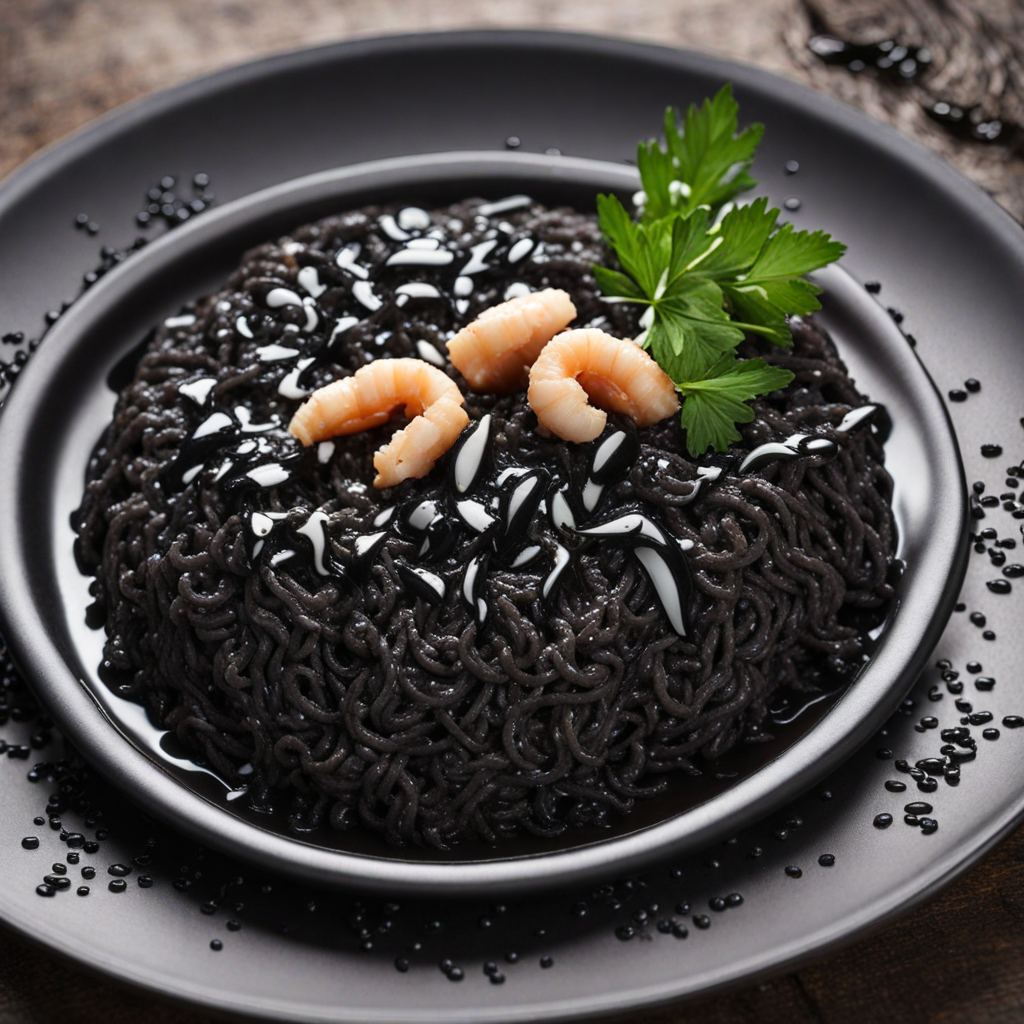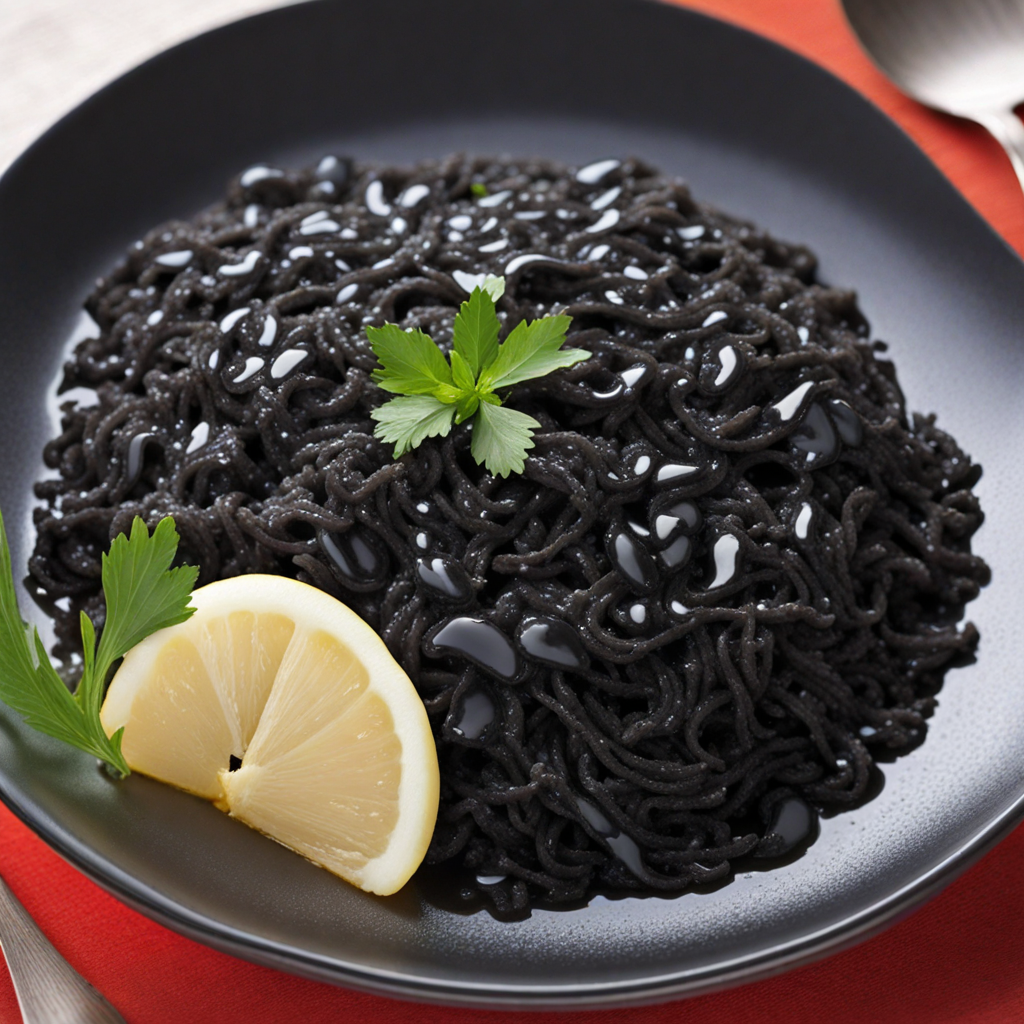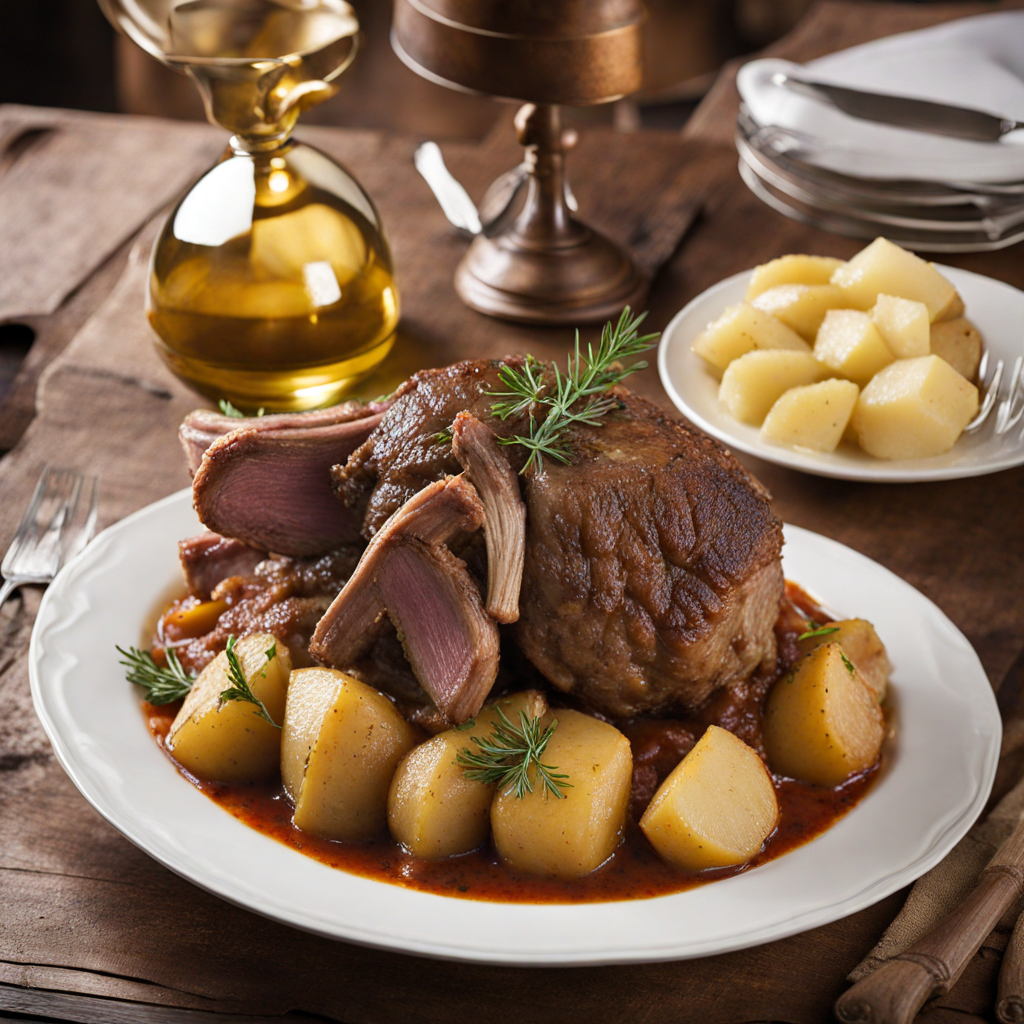Crni Rižot
Crni Rižot, or Black Risotto, is a traditional Croatian dish that showcases the rich culinary heritage of the Adriatic coast. This unique risotto is characterized by its deep black color, which comes from the ink of cuttlefish or squid, a common ingredient in coastal cuisines. The dish is typically prepared with Arborio rice, known for its creamy texture when cooked, and is often infused with a variety of fresh seafood, such as shrimp and mussels, enhancing its briny flavor profile. The combination of the tender rice and the savory seafood creates a delightful harmony that transports you straight to the heart of the Adriatic Sea. The preparation of Crni Rižot begins with sautéing onions and garlic in olive oil, which sets the stage for the robust flavors to come. As the rice is added, it absorbs the aromatic base, gradually becoming infused with the ocean essence as the cuttlefish ink is mixed in. The dish is then simmered with a rich seafood broth, allowing the rice to release its starch and create a creamy consistency. A splash of white wine adds a layer of complexity, while fresh herbs like parsley provide a pop of freshness, balancing the rich, umami flavors of the ink and seafood. Crni Rižot is not just a feast for the palate but also a visual delight. The striking black hue serves as an intriguing contrast to the bright colors of the seafood and garnishes, making it a popular choice for both home cooks and restaurant chefs alike. Served hot, often with a sprinkle of lemon juice to enhance its flavors, this dish invites adventurous diners to savor the taste of the sea in a truly unique way. Each bite is a reminder of Croatia's maritime heritage, making Crni Rižot a must-try for anyone looking to explore new culinary landscapes.
How It Became This Dish
Crni Rižot: The Black Risotto of Croatia Crni rižot, or black risotto, is a dish that encapsulates the rich culinary tradition of Croatia, particularly within the coastal regions of Dalmatia and Istria. Its striking dark color, derived from cuttlefish or squid ink, presents an intriguing visual appeal while its flavors tell a story of the Mediterranean’s maritime culture. This dish not only represents a unique gastronomic experience but also carries a deep history, intertwined with the coastal communities that have shaped Croatia’s culinary landscape over centuries. Origins and Early Influences The origins of crni rižot can be traced back to the broader Mediterranean cuisine, where seafood has been a staple for centuries. The practice of using ink from cephalopods, such as cuttlefish and squid, dates back to ancient times. Historical records suggest that the Greeks and Romans were already experimenting with these ingredients in their cooking, although the specific combination of seafood, rice, and ink that characterizes crni rižot developed later. Rice was introduced to the Mediterranean region by the Arabs during their conquests in the 8th century. Over time, rice cultivation spread to various parts of Italy and the Adriatic region, notably in the fertile plains of the Po Valley and around the coastal areas of Dalmatia. The combination of local seafood with rice became a hallmark of the region's cuisine, particularly as trade routes opened up and the exchange of culinary ideas flourished. Cultural Significance Crni rižot holds a significant place in Croatian culture, especially among coastal communities where fishing is a vital part of life. The dish is often seen as a celebration of the sea’s bounty, reflecting the connection that these communities have with their maritime environment. It serves not only as a meal but also as a symbol of local identity, showcasing the flavors and traditions that define Croatian coastal cuisine. In Dalmatia, crni rižot is more than just food; it's a communal experience. Traditionally prepared for family gatherings, festivals, and special occasions, the dish invites sharing and togetherness. The act of cooking and enjoying crni rižot often comes with stories of fishing trips, local lore, and familial bonds, reinforcing the sense of community among those who partake in it. Moreover, crni rižot has evolved into a beloved dish in Croatian restaurants, both locally and internationally. Chefs take pride in their recipes, often adding unique twists that reflect their culinary backgrounds or the freshest seasonal ingredients available. This adaptability speaks to the dish's resilience and its ability to transcend cultural boundaries while remaining deeply rooted in Croatian heritage. Ingredients and Preparation The classic crni rižot is made using Arborio or Carnaroli rice, known for its high starch content, which lends the dish its creamy texture. The primary ingredient, cuttlefish or squid, is typically cleaned and cut into pieces. The ink, which gives the risotto its characteristic black hue, is either extracted from the seafood itself or purchased in small sachets. Preparation begins with sautéing onions and garlic in olive oil, a fundamental technique in Mediterranean cooking. The rice is then added, toasting briefly before deglazing with white wine. Gradually, fish or seafood stock is incorporated, allowing the rice to absorb the liquid and develop its creamy consistency. The cuttlefish or squid is added midway through cooking, ensuring it remains tender and flavorful. Seasoning with salt, pepper, and sometimes a hint of lemon, the dish is finished with a drizzle of quality olive oil and a sprinkle of fresh parsley for garnish. Evolution Over Time Over the years, crni rižot has adapted to changing tastes and influences. The rise of modern gastronomy has seen chefs experiment with the traditional recipe, incorporating elements of fusion cuisine, such as Asian flavors or contemporary plating techniques. Some variations include using different types of seafood or adding vegetables, reflecting a broader trend towards sustainability and local sourcing. In recent decades, as Croatia has gained international recognition as a tourist destination, crni rižot has become a culinary ambassador for the country. Food enthusiasts flock to the Adriatic coast, eager to sample this iconic dish and participate in local culinary traditions. The promotion of Croatian cuisine, particularly through festivals, cookbooks, and cooking classes, has further solidified crni rižot's status as a staple of Croatian identity. Challenges and Future Directions Despite its popularity, crni rižot faces challenges in the modern culinary landscape. Overfishing and environmental changes threaten the availability of certain seafood, prompting a push for sustainable practices within the fishing industry. Chefs and home cooks alike are becoming more conscious of sourcing their ingredients responsibly, ensuring that the flavors of crni rižot remain vibrant without compromising the health of marine ecosystems. Additionally, as global food trends shift towards plant-based diets, there is potential for crni rižot to evolve further. Innovative chefs are exploring vegetarian and vegan adaptations, utilizing ingredients like mushrooms and seaweed to replicate the umami flavors traditionally derived from seafood. This adaptability bodes well for the future of crni rižot, allowing it to remain relevant in a rapidly changing culinary world. Conclusion Crni rižot is more than just a dish; it is a reflection of Croatia’s rich cultural heritage, maritime history, and communal values. From its origins rooted in ancient Mediterranean cuisine to its status as a contemporary culinary icon, crni rižot encapsulates the essence of Croatian coastal life. It invites not only a sensory experience but also a deeper appreciation for the traditions that have shaped its evolution over time. As we savor each spoonful of this striking black risotto, we partake in a narrative that transcends generations, connecting us to the fishermen who once cast their nets in the Adriatic, the families who gathered around the dinner table, and the chefs who continue to innovate while honoring the past. In every bite of crni rižot, we taste a story of resilience, community, and the enduring love for the sea that defines Croatia’s culinary landscape.
You may like
Discover local flavors from Croatia







